
Created: 10 October 2002 Updated: 3
March 2017
Page 2
|
This page is intended as an addition and continuation of my main page on the History of the U Boat War 1939 - 1943. I have so many images that I wished to include in my U Boat Page that they threatened to drown the script and historical data set in that page. Some of the images here are duplicated; some are not included at all on the previous page. I hope that you find enjoyment and knowledge from these images. Should you require any of them for your own purposes, please feel free to right click on the image and save as.... But please give credit for their use and, where stated, the original source of these. Someone went to a lot of work to bring these images to your attention. Myself with hours of scanning, authors and net writers for their hours of discovery and the results of such. I present these images in no particular order. |
Horst Elfe, Wolfgang Heyda, Fritz Wentzel, Otto Kretschmer, Hans Engel, Gerd Schreiber, Hans Ey, Curt von GoŖler, Joachim Matz, GŁnther Lorentz as Prisoners of War. |
|
Copied from The Battle of The Atlantic - Andrew Williams. Caption Reads: The "tonnage king" Otto Kretschmer, seen here with cigar and papers in hand. In 1940, as Commander of U23 and then U99, Kretschmer sank 238,327 tons of Allied shipping. Erich Topp is in the foreground on the right.
|
|
|
|
|
|
|
Admiral Sir Max Horton, C in C Western Approaches inspects surrendered U Boat 532; escorted by a German Officer - May 1945.
|
|
Captured U-505 German sub arrives in the USA May 15, 1945 |
|
|
|
Type 7c U Boat (above) entering St Nazaire locks. Note insignia on conning tower; the "Bull of Scapa Flow" - a larger milch cow is seen alongside. Each on of these "milch cows" could deliver up to 432 tons of diesel fuel to fighting submarines as well as provisions, rearmament, torpedoes and act as a repair ship. There were 10 type XIV boats but they rarely returned to port! Too clumsy, too slow to dive, easy prey for aircraft. |
|
Enigma Intercepts U-505 |
|
|
|
|
|
Type VIIC Constructed between 1938-1944, the VIIC boats were slightly larger internally than their predecessor, the type VIIB and also had a slightly improved surface range. (9700 nautical miles to 9400 nautical miles, at 10 knots, combined diesel/electric drive) Their maximum surface speed was 17-17.7 knots and their maximum submerged speed was 7.6 knots. The type VIIC carried 14 torpedoes (4 in forward tubes, 8 in forward torpedo compartment, 1 in aft torpedo tube and 1 aft torpedo compartment). The orginal VIIC design included a 88mm deck gun mounted forward of conning tower. Effective against surface vessels in the early years of the war, this gun was removed from new and older boats after 1942 due to the increased danger of enemy air attack. The boat was designed to carry 60 men (4 officers and 56 enlisted men) The type VIIC was by far the most common of the World War II German u-boats with 660 boats built. This is the U565. |
|
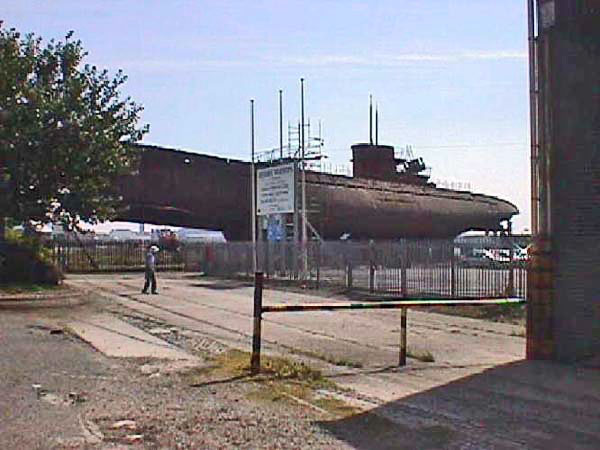 |
The U534, which has its own pages, sitting on the Wallasey side of the Docks on the Wirral before she was moved once, further along the quayside, and then to Birkenhead Woodside Ferry Terminal |
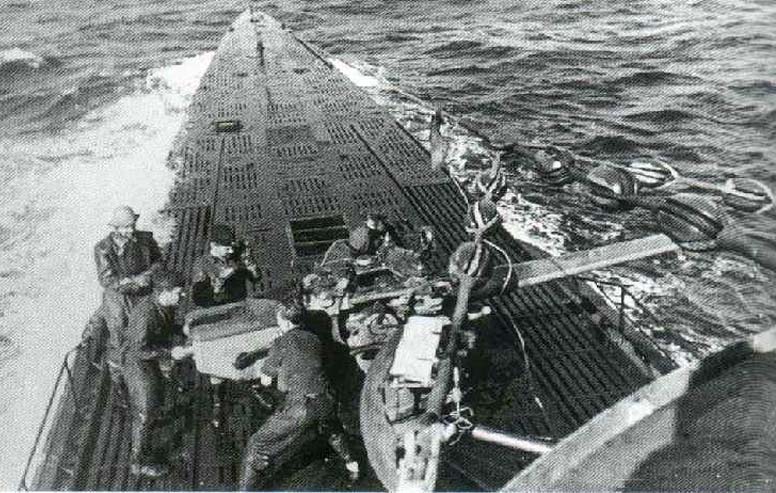 |
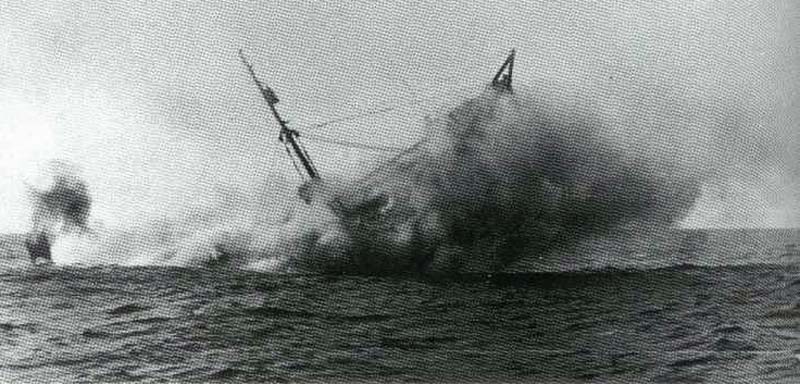 U Boat 123 (left) shells and sinks a freighter SS Culebra |
U344 (officers) right |
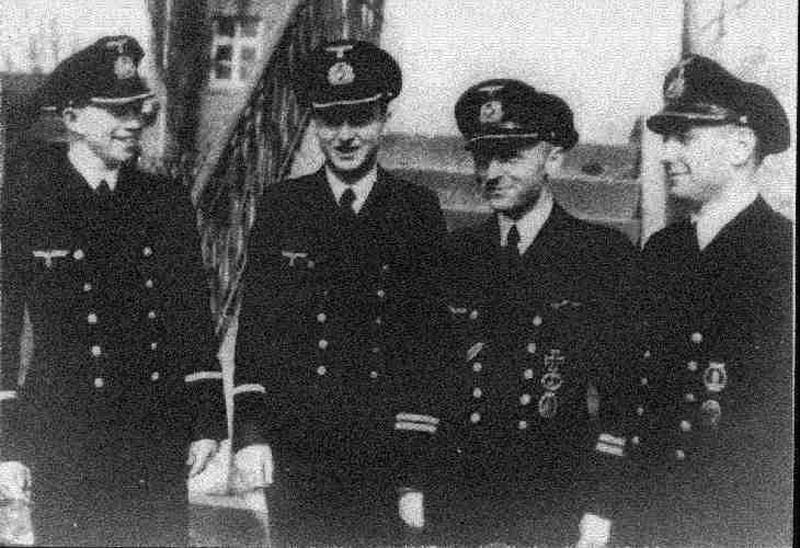 |
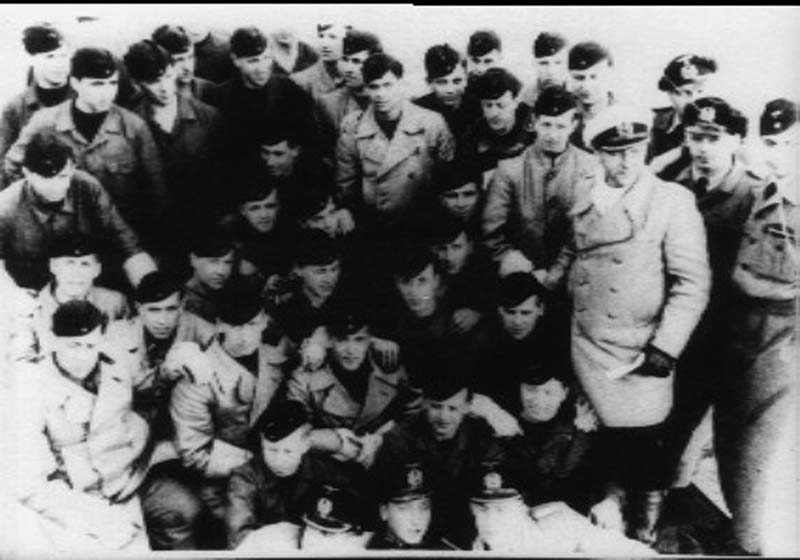 |
Crew of the U344 |
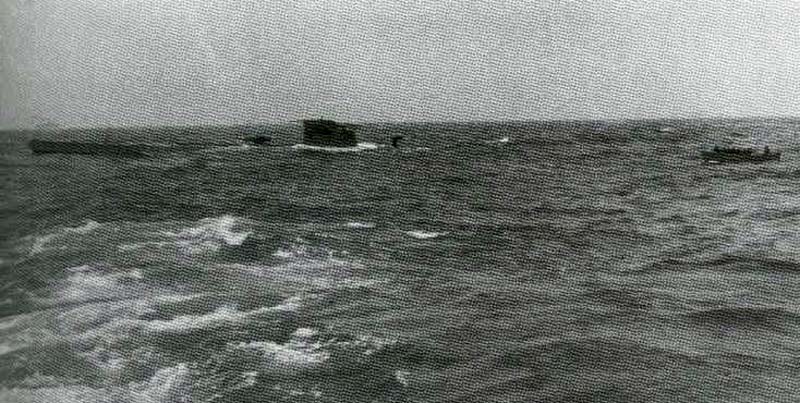 |
U110 - Boarding party heading for sub from HMS Bulldog. Important signals cyphers and an enigma machine were recovered from the submarine. It later foundered. |
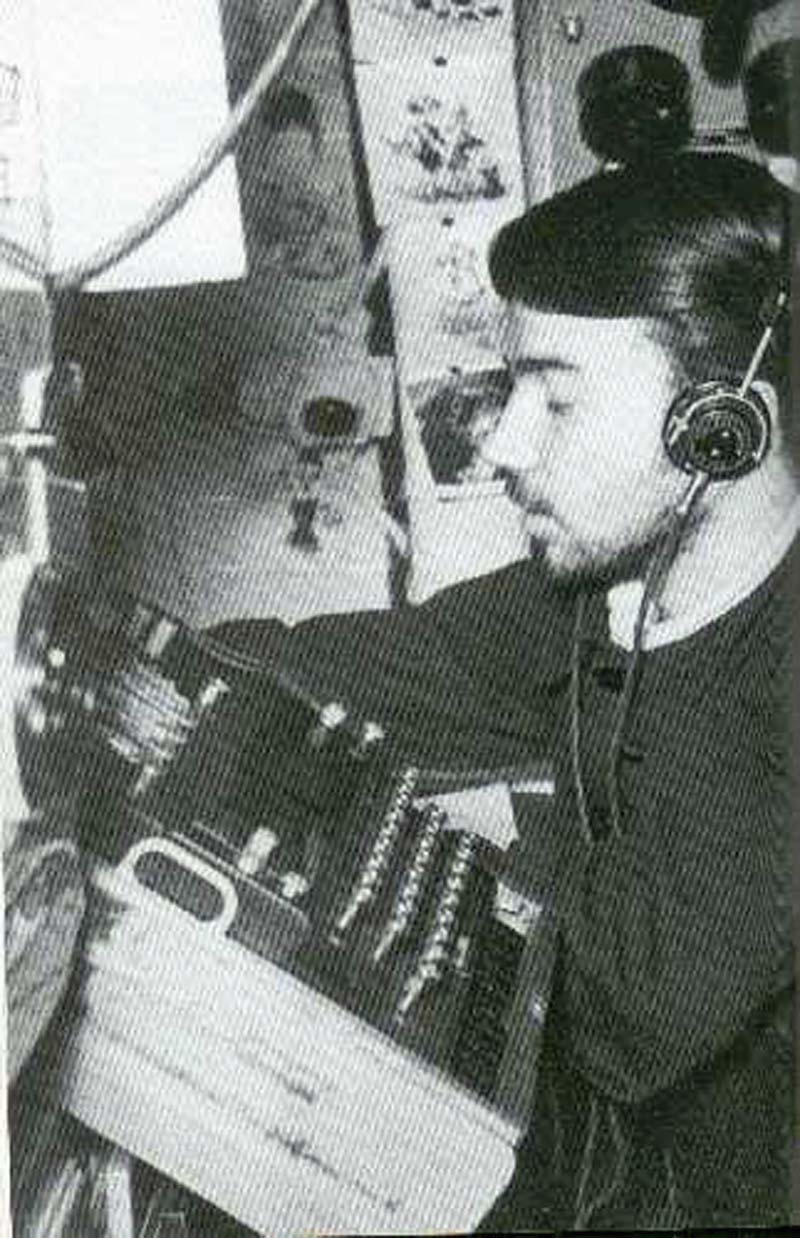 |
The enigma machine
operator on board the U 110. Surprised someone actually took this image due to the absolute secrecy surrounding the equipment, but I am glad they did! |
| U Boat pen Keroman 1b Lorient France |
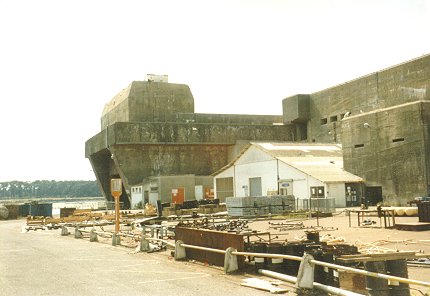 |
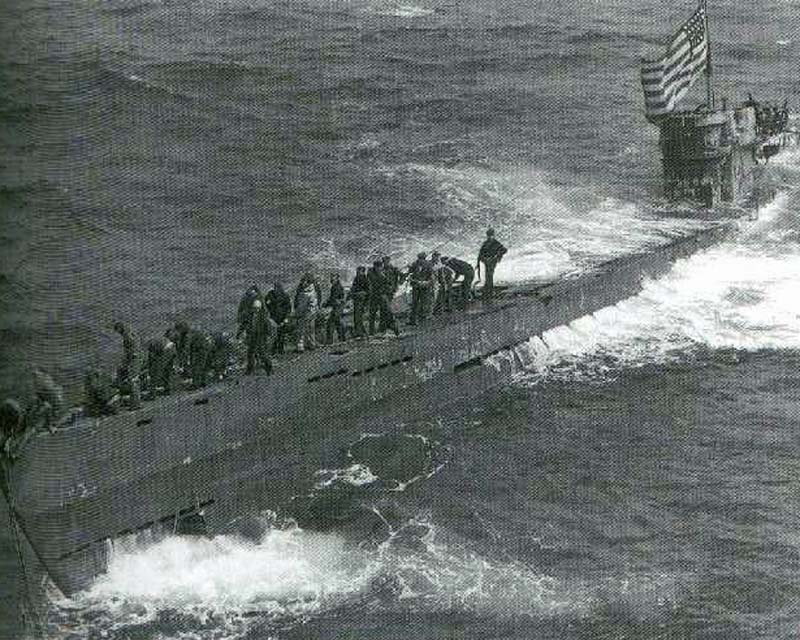 |
U505, in American hands, now a permanent exhibit in Chicago |
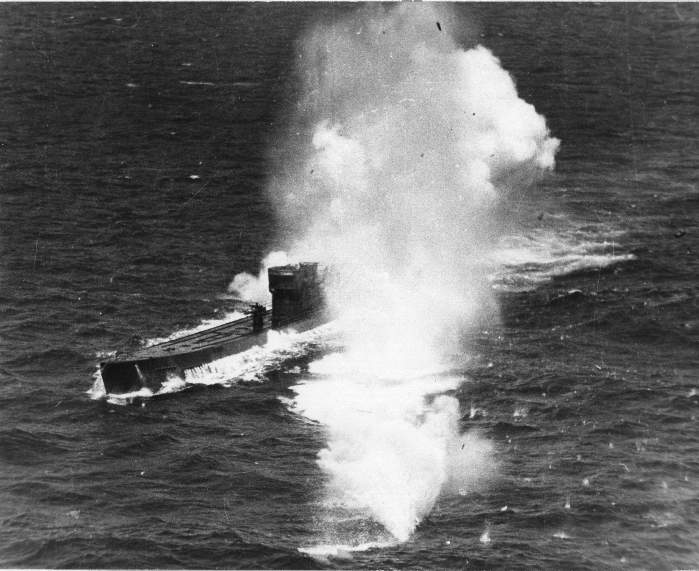 U849 under air attack |
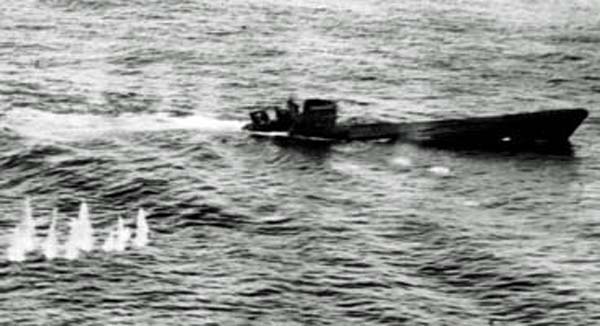 U426 sinking |
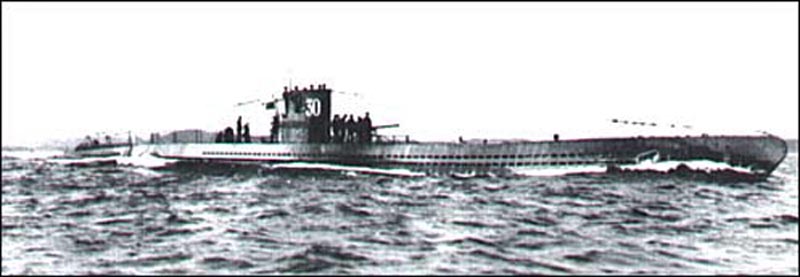 The U30 and her Captain (Lemp) right. The man who sank the Athenia |
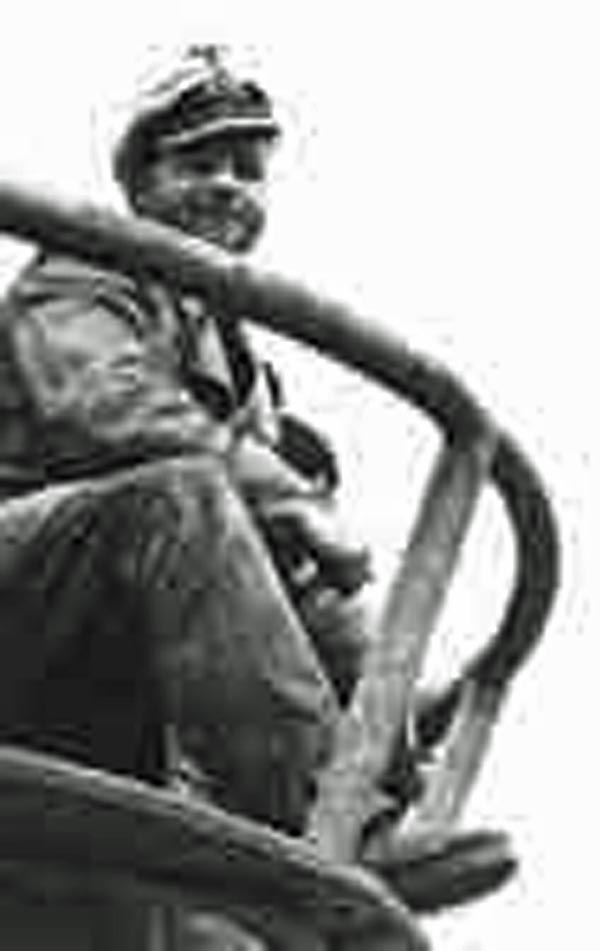 |
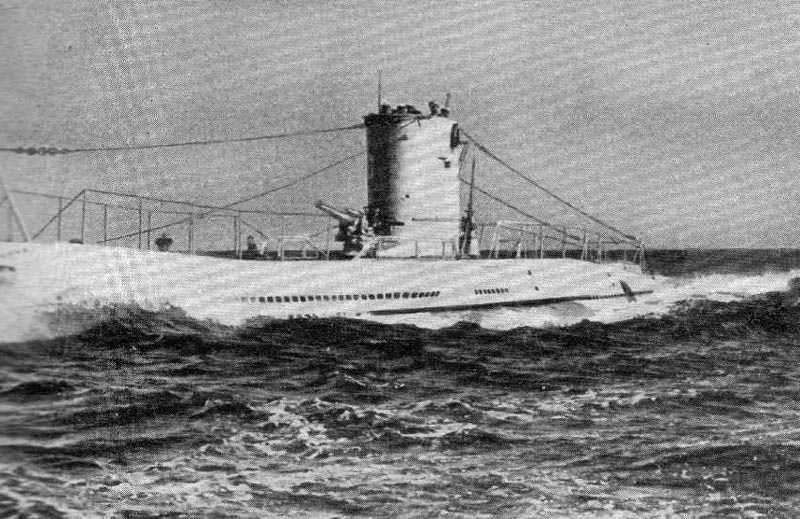 U35 |
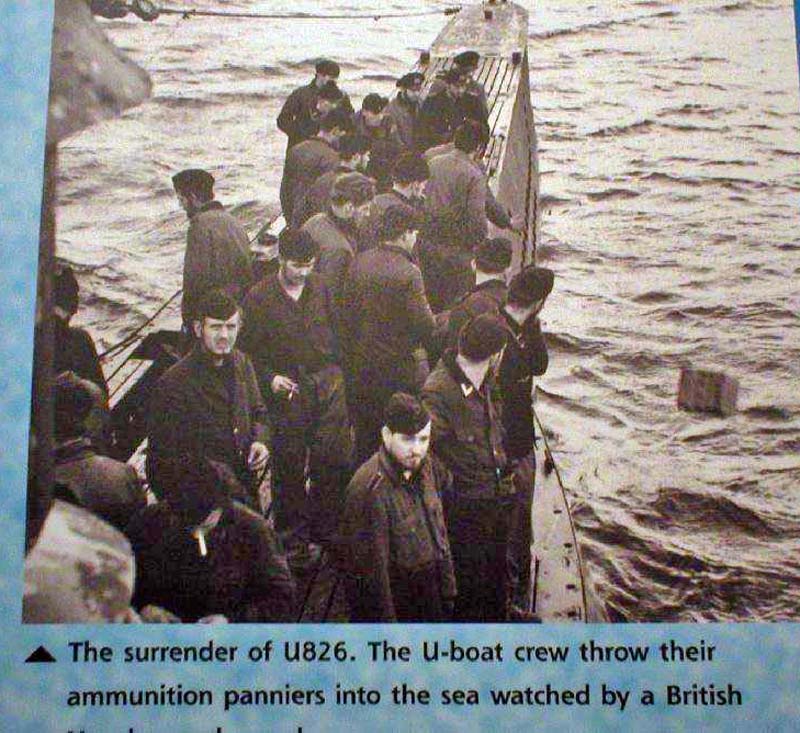 |
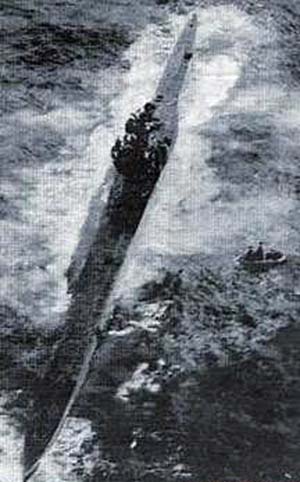 U 570 being boarded and right and below, captured intact. |
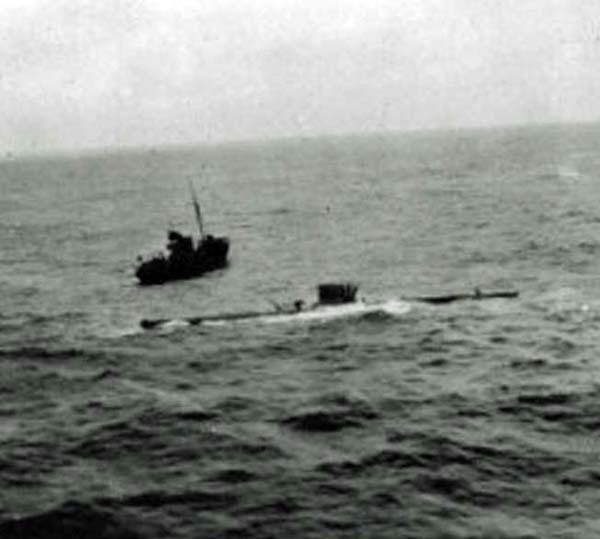 |
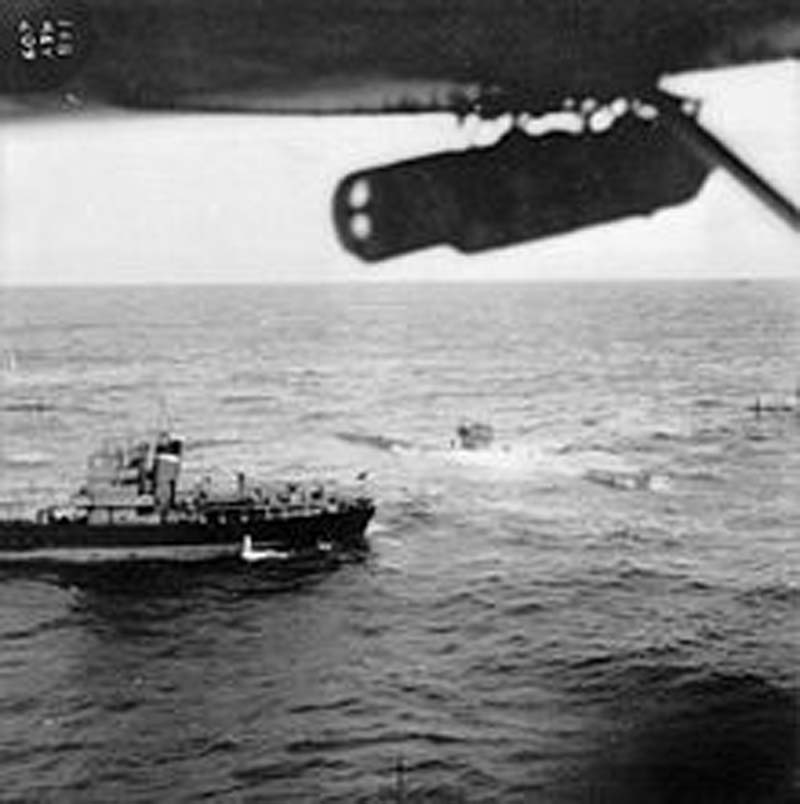 |
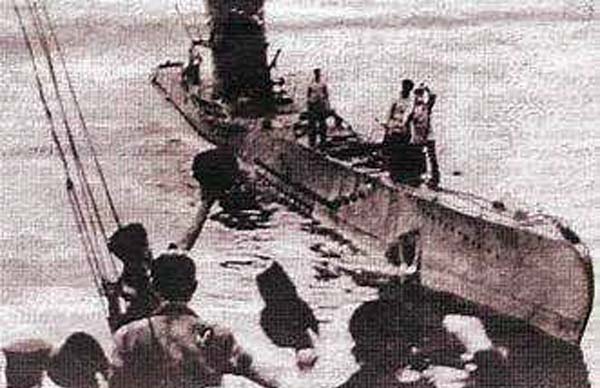 arriving in Barrow |
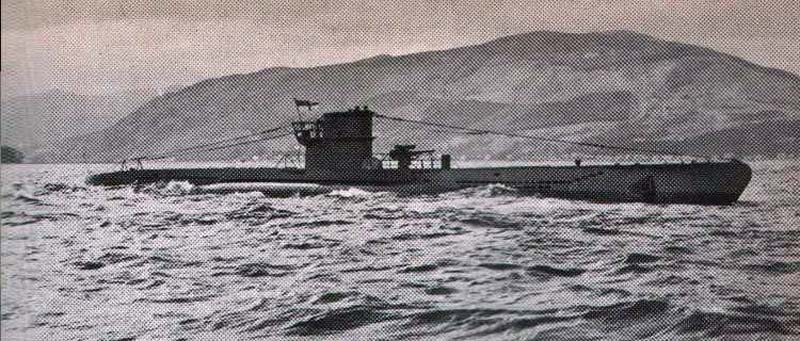 |
Left U570 as HMS Graph |
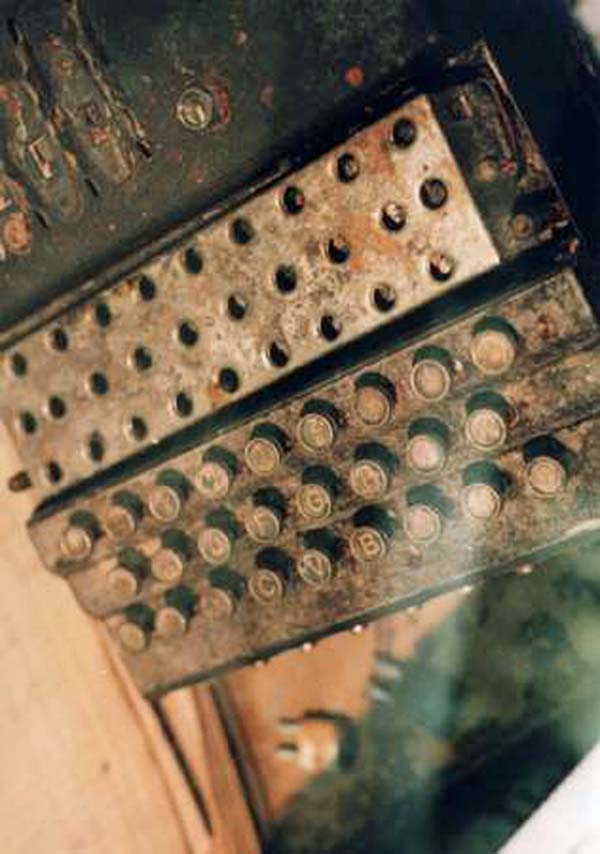 U534 enigma machine |
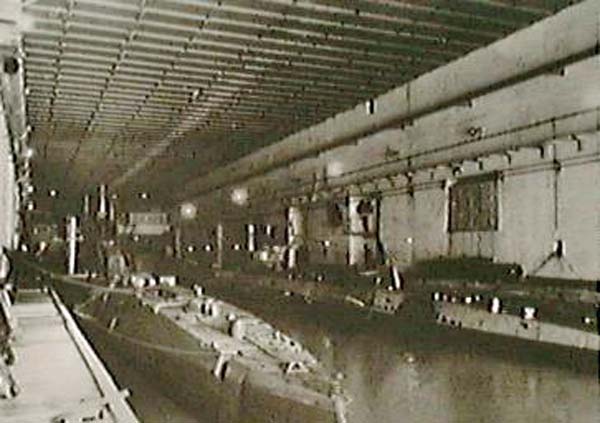 U Boat Pens St Nazaire |
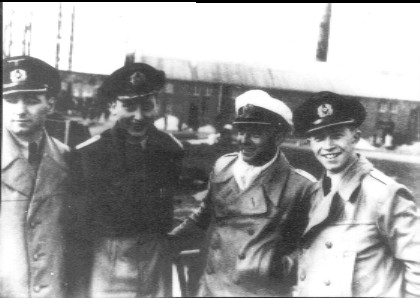 U boat Watch Officers |
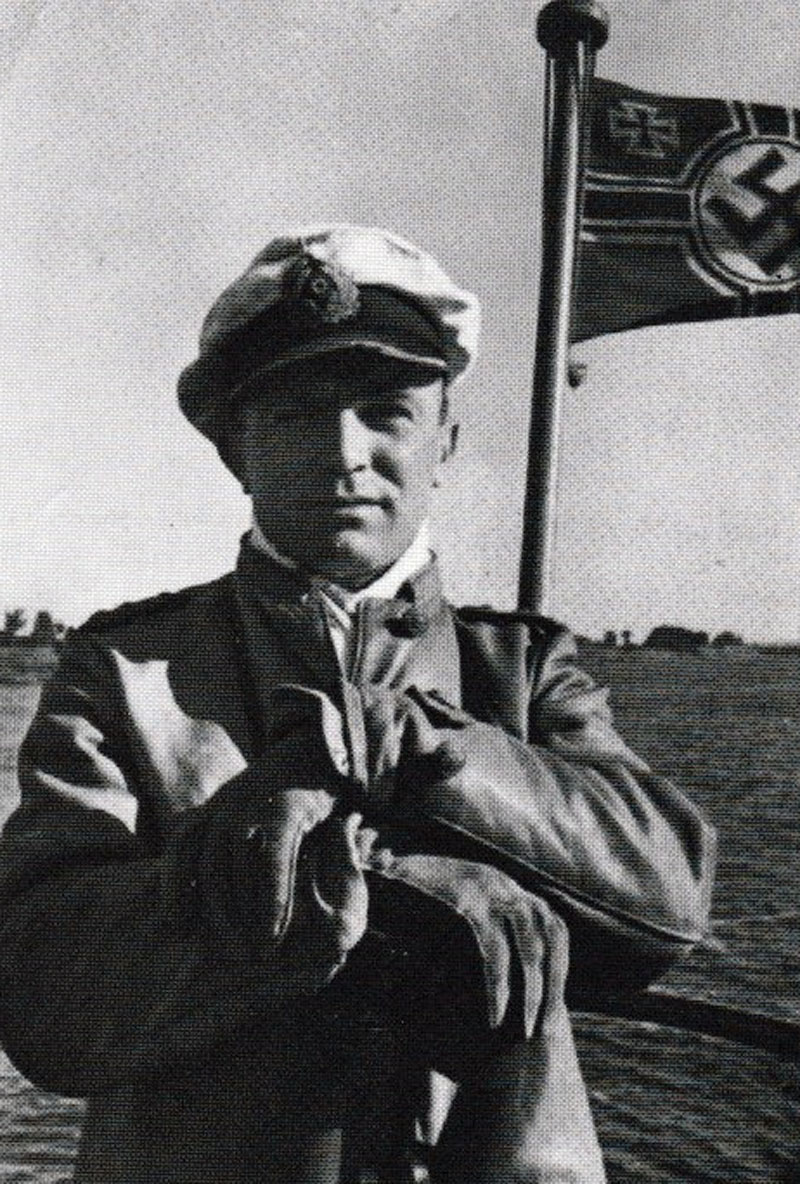 Prien |
 7c |
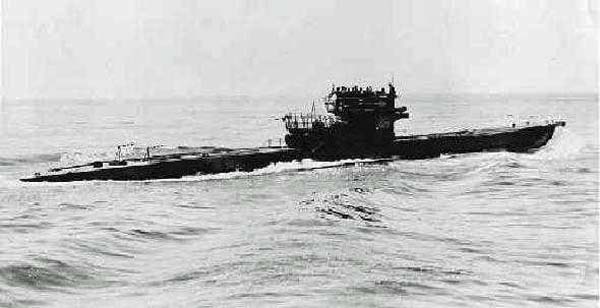 U532 |
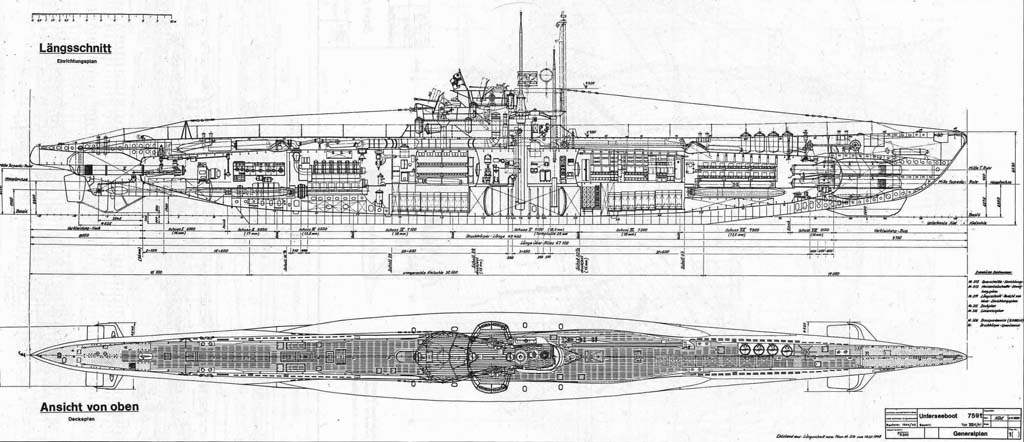 Type 7C |
|
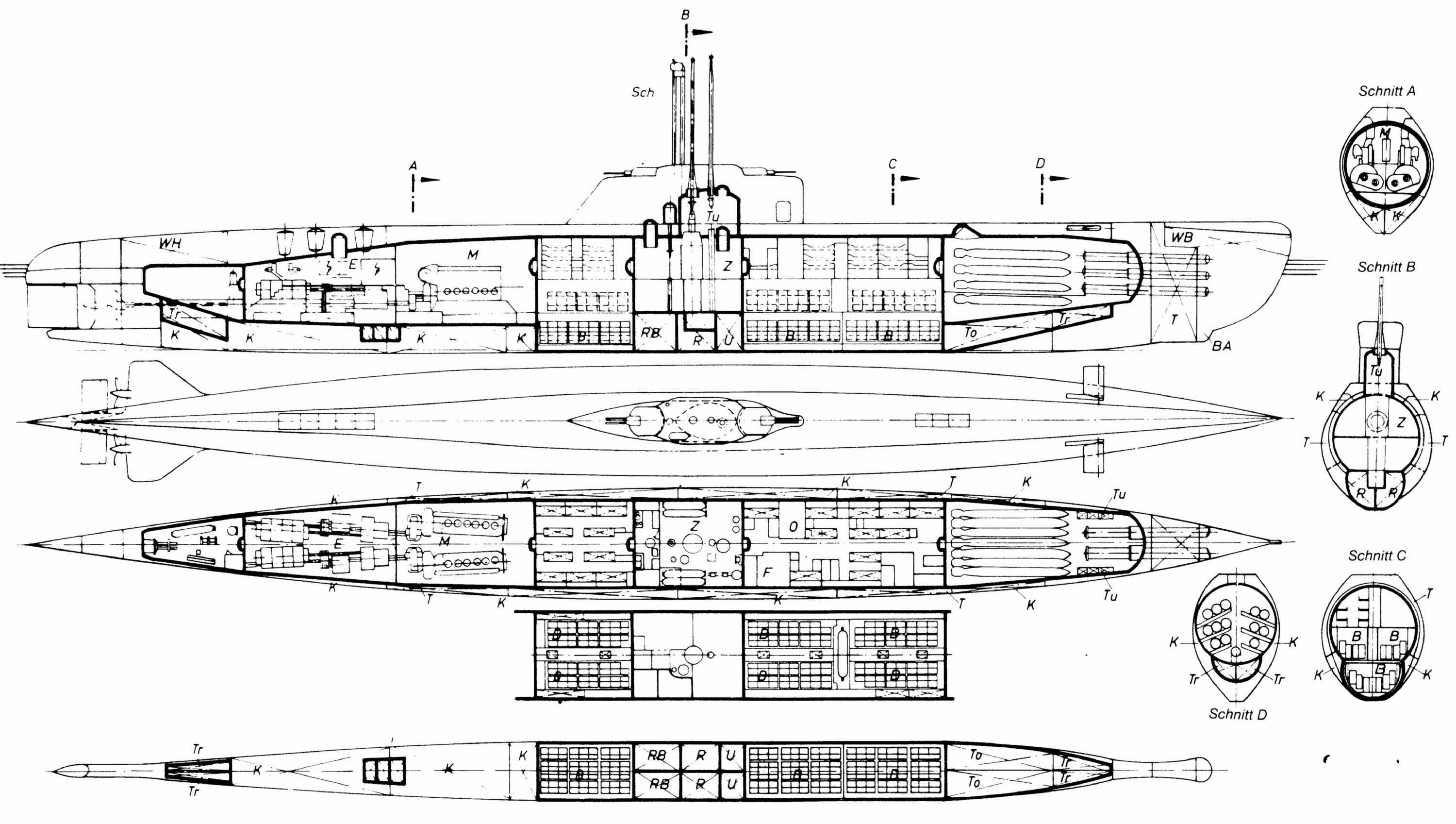 Type 21 |
|
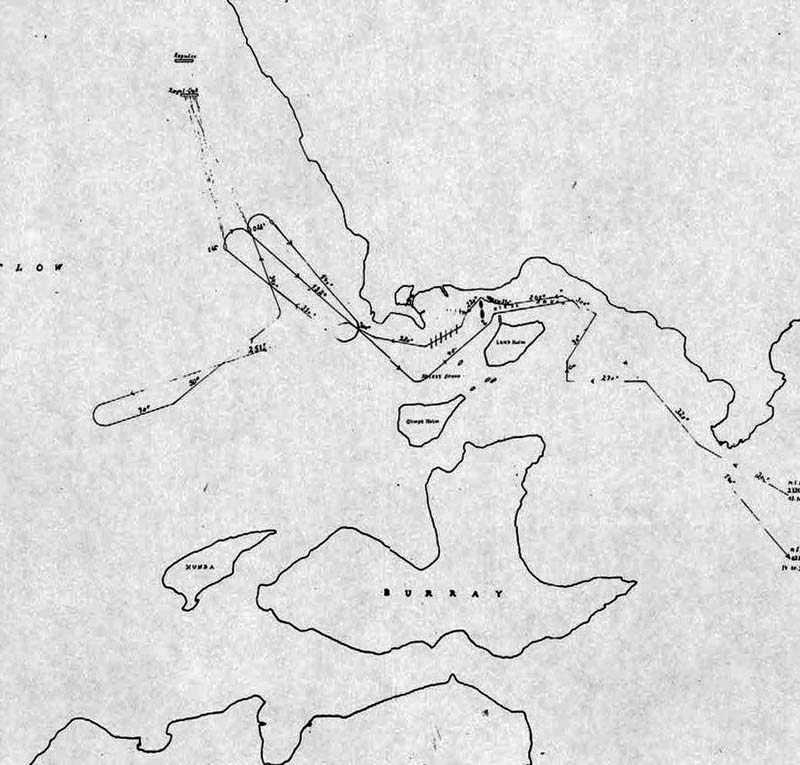 The route taken by the U47 (Prien) into Scapa Flow |
|
|
The man standing behind Winston, facing the camera, is none other than Admiral Ernest J King. This "gentleman" was an anglophobe American Admiral who, as Commander of the Eastern Seaboard of the USA, refused to acknowledge signals from Britain warning of approaching U Boats (via enigma decoding) to attack the US seaboard after the USA entered the war. As a direct result of this, thousands of sailors were sent to their deaths. He also refused to adopt the British convoy system, allowing hundreds of vessels to sail independently, lights ablaze, against well lit coastlines. The U Boat Commanders referred to it as the "happy time" - thanks to this man above, they could not miss. They only broke off attacks when they ran out of ammunition. This admiral probably did more to help the German war effort than any individual. Admittedly he did not have the resources as such, the Pacific being the main problem at that time. But his intransigence was rock like. Roosevelt refered to his inactivity as 'criminal'. |
|
|
U581 Translated from the original portuguese and reprinted with permission |
|
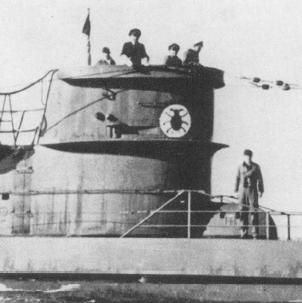 |
|
|
U-581, under the commander Werner Pfeifer orders, was one of the submarines that has deviated from the route to try to catch the Llangibby Castle. He had left the French port of St. Nazaire on 10 January 1942 bound for Newfoundland, where should conduct patrols for 14 days, then returned to France. The problems soon began on the first day when the quick dips tested crew near the French coast. During the ship collided with the bottom and damaged the rudder that in certain situations failed to respond to orders, which conditioned the rest of the cruise. Despite the disastrous start things started to run a little better. Near the 23 hours of 19 January, 200 miles west of Gibraltar, they saw what looked like a British war sloop sailing alone. The sea was calm, the dark and rainy night. They fired two torpedoes, one of which broke the ship in half. Less than a minute after there have been new bursts, perhaps caused by depth charges that were on board. A search through the rubble did not find survivors. It involved possibly "Trawler" patrol "Rosemonde" that sailed from Wales on 13 January bound for Gibraltar and disappeared without survivors during the trip. The order to direct it to the Horta interrupted plans to continue to Newfoundland. On 31 they were already on the island's vicinity, and overnight made a visit to the port. Apparently Llangibby Castle stood behind the stone pier, which prevented it from firing torpedoes to sink. The submarine could see the movement on the ground and the lights of the cars to pass. The next day moved away to sea where they remained out of sight, but ready to intervene if necessary. When night fell the U-581 was new to the harbor entrance. Around two in the morning he met another Uboat the meantime had also arrived on the island. Commanders Werner Pfeifer, U-581, and Siegfried Von Forstner, U-402, lined up their ships and the strategy to follow. They decided to put the channel that separates the extreme Horta Pico. Forstner patrol north and south Pfeifer, covering any of the outputs that Llangibby Castle could use. An advertised combat Unbeknown the Germans had arrived during the night, a deep sea tug, the "Thames" and three destroyers - Westcott, Croome and Esmoor - in order to protect the Langibby Castle to Gibraltar, which could be targeted more time consuming repairs. At dawn the U-581 became aware of the approach of two warships. He fired a torpedo stern, but this went too far from the target. With a strong moon that illuminated the night the German commander gave orders to sink, but for maneuver, and when they were about 80 meters deep, jumped a rivet outlet exhaust port smoke and water came in torrents for the engine compartment diesel. The threat was extended quickly to the electric motor, allowing the submarine to navigate submerged. |
|
|
In an environment described by the crew as panic, and
ship to descend more and more into the background, was ordered to make an
emergency emersion, filling air ballast tanks. The Uboat shot of 160 to 20 meters deep, when the board engineer warned the captain to the fact that they hear very clearly the propellers of ships which were above. The danger of colliding with one of them was very real. It was given new order to come down and the operation, uncontrolled environment, took the submersible again to 150 meters. According to some crew it was at that moment that the nerves of Pfeifer gave and gave new order to emerge. During these maneuvers the submarine approached intentionally Peak, but at the time it was unclear whether the fighting happened in territorial waters - and therefore neutral - or not. The team Rebikoff-Niggeler Foundation, who discovered the wreck last September, posting the first photographs in National Geographic this month, confirmed that the submarine is 2.1 miles from the coast, indicating that the fight took place in Portuguese waters. Today this information is not relevant, but at the time could have triggered a diplomatic conflict ... Both Westcott and Croome followed the sonar signals when the submarine surfaced suddenly nearby. Ian Bockett-Pugh, commander of the first destroyer, sent to turn the ship and at full speed tried ramming the U-581. The submarine narrowly escaped, but could not avoid the effect of the explosion ten depth charges dropped during its passage. With a tight turning to port the Westcott aproou again the submarine insisting on trying to collision. Shoot the cannon was dangerous because of the proximity of Croome. Destroyer and submarine were now on a collision course. When it crossed the British ship rolled to starboard keel shooting up the submarine along the tower. Most of the Germans, who were already out to the deck, jumped into the water just before impact ... The Westcott showed intentions to repeat the collision, but the submarine raised his bow and sank quickly. The commander had given orders, before abandoning his ship to open the valves to facilitate the entry of water. It was about six in the morning. Four men died, but 42 managed to jump into the water and all, except one, were collected by two British destroyers. Walter Sitek had been one of the first men to go out to the deck of the submarine and when he saw the jump comrades did the same. He took off his clothes, leaving only a sweater and lifejacket dresses. I did not want under any circumstances be a prisoner so he swam ... with all the strength I had. After being collected in small fishing boat, three hours later, he believed that most of his comrades had died. Little satisfied with this "leakage" were the imprisoned German officers. During questioning both the captain and the engineer were concerned with the possibility of Sitek report, in Germany, the bad atmosphere that lived aboard the submarine and the way it was conducted the cruise and combat. On land, in Candelaria, Sitek was treated and dressed. He followed then to the Magdalene and from there to the city, which was attended by Destroyer medical Portuguese Douro. He returned to Germany where he commanded submarines and survived the war. It was awarded with a Second Class Iron Cross and another First. Another fight in S„o Jorge channel |
|
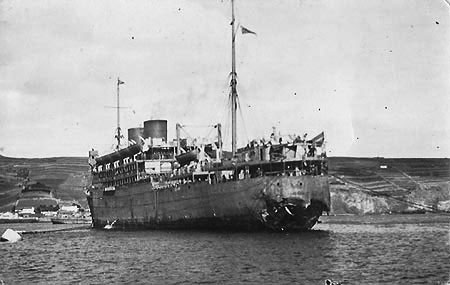 |
|
| The Llangibby Castle left the port of Horta, aided by the tug at about 11 am. Shortly after it was surrounded by the two destroyers that hours before had fought the U-581. Further north expected the third warship. All they followed later by S„o Jorge channel where the end of the afternoon were to register new fighting once again in sight of land. Around 17 hours, the middle of the channel, one of the destroyers left the formation to launch several depth charges. The effect of the explosion was felt in Piedade, Pico Island. At the same time it was spotted a few miles of the train a submarine to the surface crossing the channel. | |
|
An hour later a destroyer returned to prominence escort to attack
the submarine that was closer to the surface. The Germans seem to have
dipped in a hurry, not returning to be spotted, although the British have
continued - on time - with shots and, possibly, with the launch of depth
charges. The submarine was not reached. The Llangibby Castle come with his escort to Gibraltar days later. It has undergone some repairs and then went to England where he finally received a new helm. Among other missions would participate in the transport of troops on D - Day to Juno beach and later also for the Omaha and Utah beaches. Was sold for scrap in 1954 ... |
|
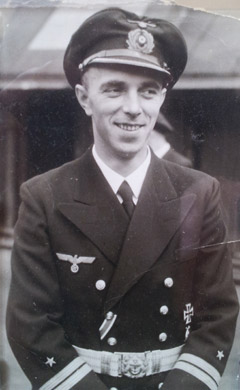 Walter Sitek |
|
Section of the Log of the U-68 Spring 1942 Patrol
(Courtesy of Frank
Brookes - SS Allende)
| Date/Time | Position, Weather, Light, Wind, Seas, Moonshine | Occurrence |
|
16/3 |
EU8143 |
Hit forward of the bridge, steamer sinks bow first, 5000 tonnes, 5 cargo holds of conventional type. Cargo probably iron ore. Sank immediately therefore could not identify it and it was not possible for crew to launch a lifeboat. Continue mission along the coast towards Palmas. (This refers to "Baron Nemands, 3386tons) |
|
17/3 |
Mid Atlantic, light seas, poor visibility, sheet lightning on horizon Wind SSW Force 2-3 |
120 Degrees Economy cruising. |
|
0545 |
Silhouette of steamer on horizon 5 degrees to starboard. Following in the general direction of 285 degrees and confronted | |
|
0633 |
Positioned on its starboard side and readied for surface torpedo attack | |
|
0635 |
Tube 1 fired, depth 3 metres, distance 1000 yards, speed to target 10 metres per second. Hit target amidships in 1 min 57 seconds. Steamer not sinking, lifeboats launched, investigating. Steamer "Ile de Batz" 5755 tonnes from Rangoon with general cargo | |
|
0751 |
After investigation, artillery used to sink steamer, firing 33 rounds of explosive shells. Ship ablaze listing to port. | |
| 0800 | Steamer rolled over and sank stern first | |
| 1025 | 90 degrees economy cruising | |
| 1059 | Steamer in sight at 75 degrees. Approaching from general course of 285 degrees | |
| 1200 | Wind 1 Seas 0-1 | |
| 1216 | Submerged for underwater attack | |
| 1326 | Twin torpedo attack, tubes 2 and 4, depth 3 metres, speed 10 metres per second, distance 500 metres. Hit target amidships in 24.8 seconds. Crew launched one lifeboat and started rowing to nearby coast, other lifeboat damaged. Steamer will not sink. When steamer was on fire approached closely for identification. The name Scottish Prince was over painted. 4917 tonnes could be read as 6917 tonnes. The steamers weapons were 1 x 10.2 centimetre cannon stern mounted, and 2 x twin machine guns on bridge. Fire control located behind the bridge. Cargo soya beans and oil seed. | |
| 1450 | Steamer sinks from rear port quarter | |
| 1501 | Aircraft approaching from land at 140 degrees. Emergency dive | |
| 1600 | Submerged 180 degrees | |
| 1736 | 90 degrees economy cruise | |
| 1945 | At 55 degrees smoke sighted, approach for attack at 285 degrees | |
| 2000 | Steamer on port bow, position 40 - 50. Approached at dusk for attack from port side. | |
| 2103 | Tube 3 fired, depth 3 metres, distance 1000 metres, speed 9 metres per second. Hit amidships in 83 seconds. Steamer launched lifeboats and raised mayday. Answering mayday and approaching lifeboats. Steamer Allende, size 5081 tonnes with general cargo from Calcutta, home port Cardiff. | |
| 2228 | Final attack from tube 4, depth 4 metres, distance 1000 metres, 38 seconds hit aftermast and steamer sinks at 2233. | |
| 2243 | 85gr economy cruise | |
| 2400 | On the general course of 285 degrees sank 4 steamers, continue course in the hope of another 4 | |
|
18/3 0000hrs |
Mid Atlantic east of Palmas dark night | 85gr economy cruise |
Photographic Record of The Sinking of the U-210 by HMCS Assiniboine
Images found on: http://forum.axishistory.com/
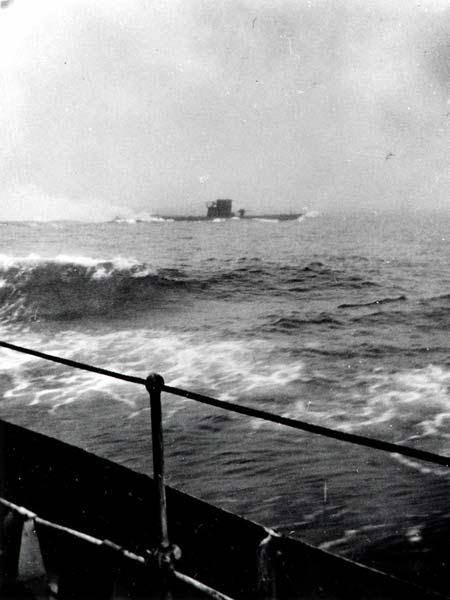 U210 caught on the surface gun battle ensued |
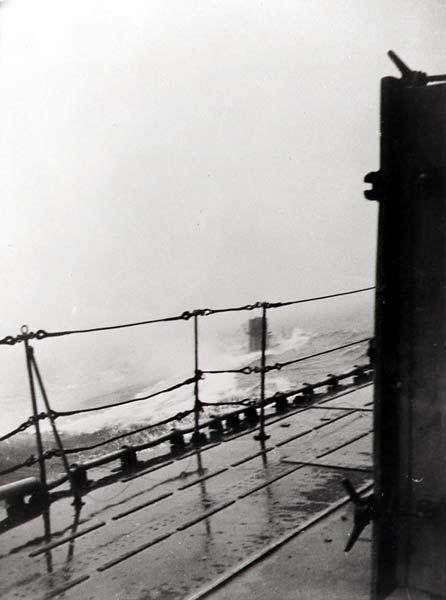 followed by U210 attempting to dive |
|
Destroyer closes to ram submarine |
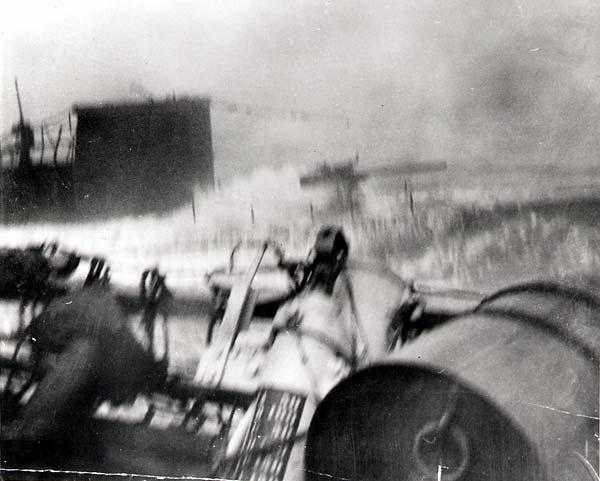 Impact! |
|
Survivors brought on board |
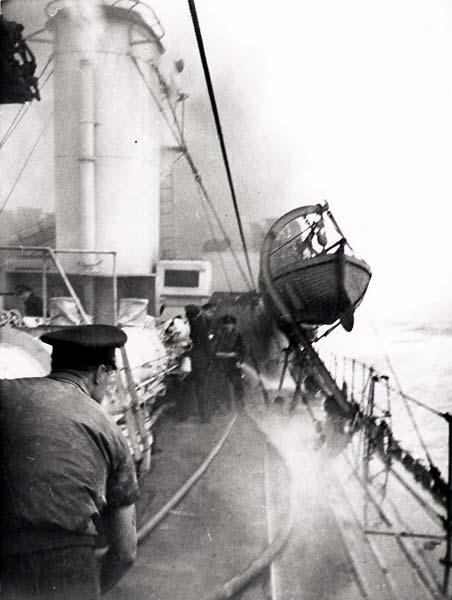 Fire on board due to gunfire battle with U-210 |
|
HMCS Assiniboine |
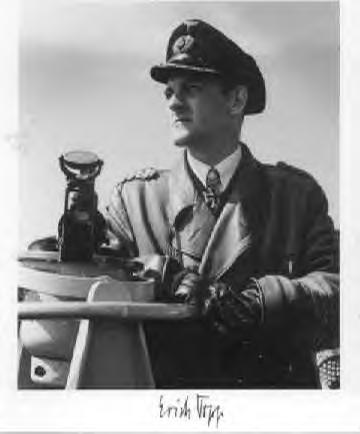 Erich Topp - Commander of U552 "Red Devil" Went on to become an NATO Admiral |
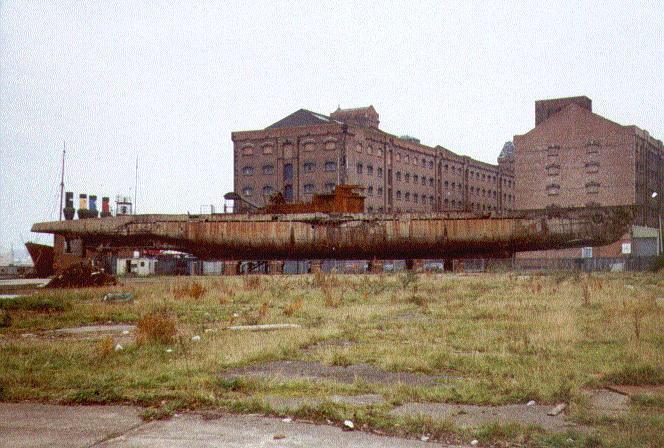 U534 |
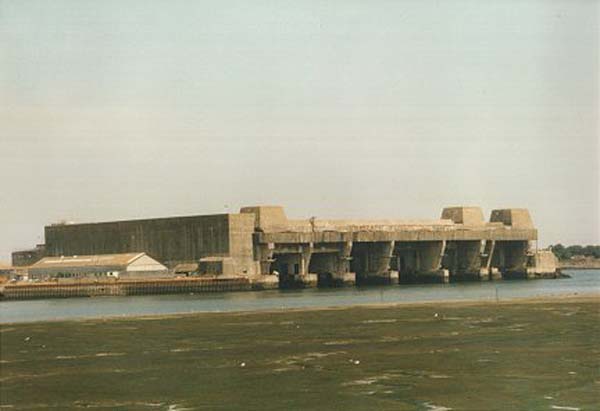 Keroman 1 Lorient France |
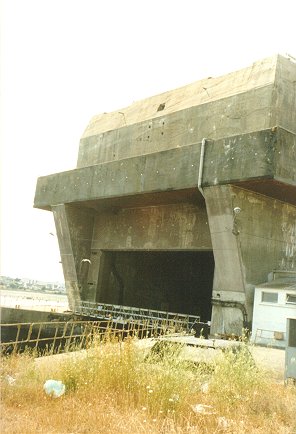 Keroman 1a |
U boat pens at
Lorient was the first German base on the west
coast of France, Lemp, in the U-30 was the first U Boat to arrive, on July 5th
1940. Soon following was Brest, La Pallice, St Nazaire and Bordeux.
Submarine flotilla No. 1 based at Brest. |
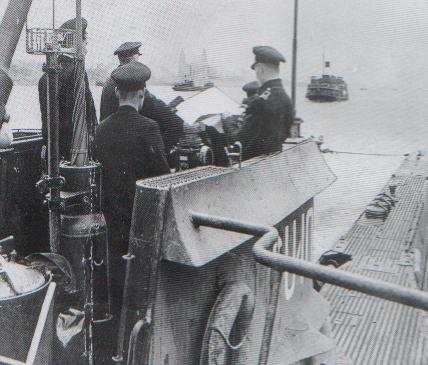 |
U Boat in the River Mersey off New Brighton. Liver Buildings can be seen rear centre and
a Mersey Ferry in
front of U Boat 1023. |
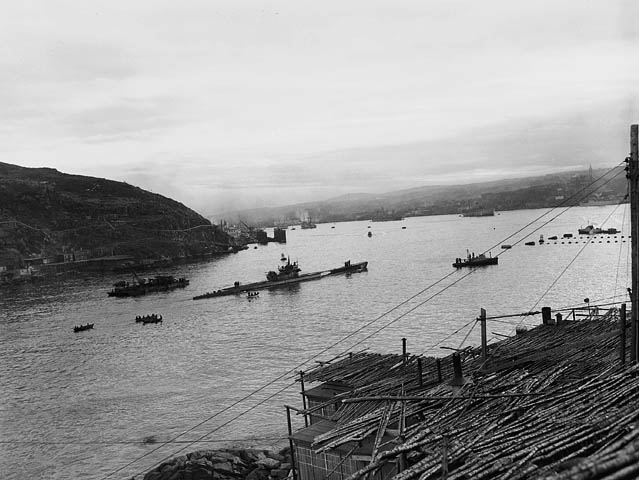 |
This was originally a pic
taken from the Maritime Museum in Liverpool, and the info on the pic is wrong.
This is the U190. Supposedly Halifax but was in fact St Johns. |
U-278 after the surrender, taken from a Liberator. This image was sent to me by Dani J Ackerberg of www.u-historia.com 278 was a type 7C http://www.uboat.net/types/viic.htm Laid down 26 Mar 1942 at Bremer Vulkan Vegesacker Werft (No 43) Launched 2 December 1942 Commissioned 16 Jan 1943 Captain Oblt Joachim Franke
on 7 patrols it sank 1 ship sunk, total tonnage 7,177 GRT Surrendered at Narvik, Norway on 9 May, 1945. Transferred to Loch Eriboll, Scotland, on 19 May and later to Lisahally for Operation Deadlight. Sunk on 31 Dec, 1945 in position 55.44N, 08.21W.
Detailed information can be found on all u boats at
|
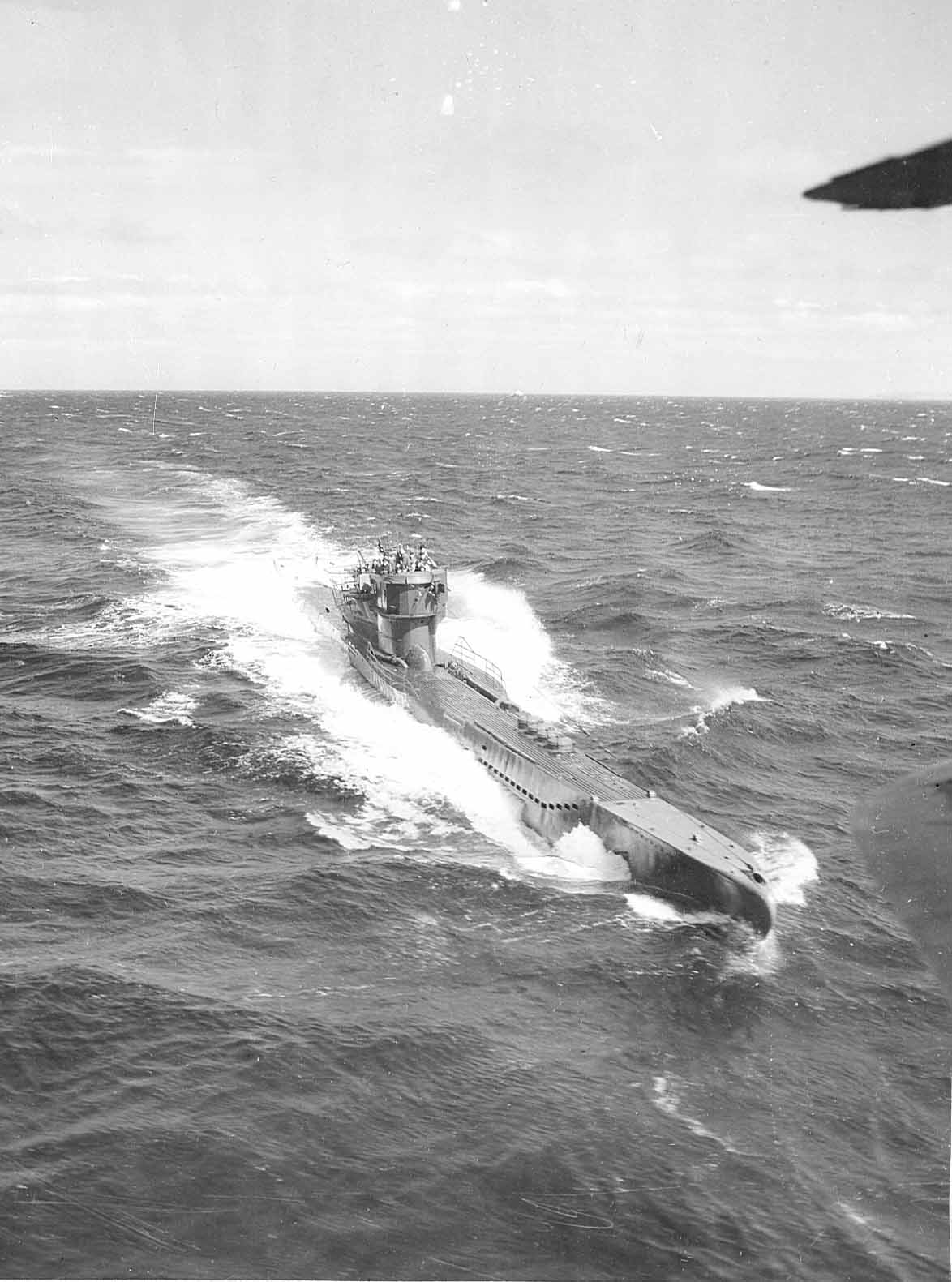 |
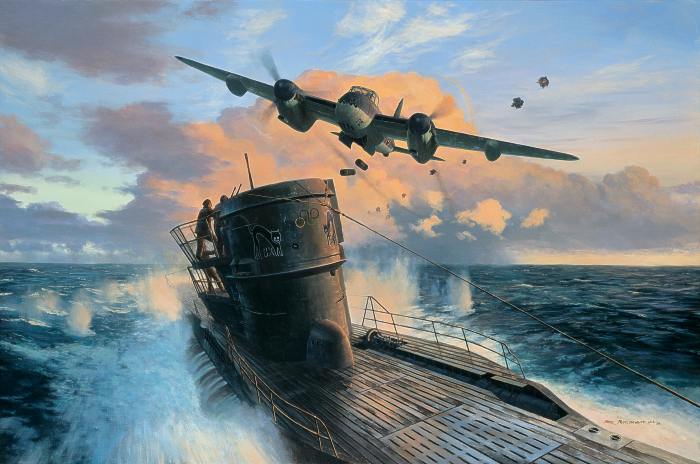 |
This painting is the work of aviation
artist Mark Postlethwaite whose site can be visited by clicking on the image.
The painting depicts the sinking of the U998 by a
333 Sqn Mosquito HP864, on 16th June
1944. On Oct 31st 2006 I got an email from Rob Adams in Africa who tells me this: On the 16th U998 was attacked with rockets and cannon fire by a mosquito of 333 (Norwegian) Squadron (Lt EU Johansen) N of the Shetlands. U804 was sent to help but she was attacked by another mosquito of 333 Squadron and had to put into Bergen with casualties. The badly damaged U998 put into Bergen 17.6.44. U998 was decommissioned at Bergen on 27.6.44 and she was surrendered there on 9.5.45.After the war all equipment was removed from the boat by the Norwegians and she was scrapped. |
 The U352 lying on her starboard side in the Atlantic off North Carolina - a war grave and yet a 'popular' dive site!! http://www.dailymail.co.uk/home/moslive/article-1393591/Graveyard-Atlantic-U-boats-the-ocean.html?ITO=1490 http://www.uboat.net/boats/u352.htm |
|
 |
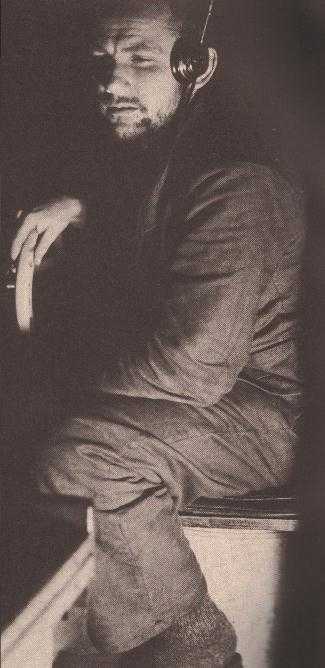 U Boat Soundman |
Model U-99 Liverpool Maritime Museum |
Image from the Maritime Museum Liverpool |
![]()
German Account of the State of War Regarding Kreigsmarine in April 1943
|
FUEHRER'S GHQ, 11/4/1943
4 copies copy Contribution by Op M (Operations Navy) to lecture by Chief of Armed Forces Operations Staff. Position of the Navy in the beginning of 11/1943 Submarine war: The U-boat weapon is being employed in force in all the seas. Conditions much more difficult than before owing to comprehensive air reconnaissance (extension of range of reconnaissance as a result of the occupation of the Azores), excellent enemy detector apparatus, and exceptionally strong escort of convoys. The aircraft is today the chief enemy of the U-boat. In spite of this by sticking stubbornly to the task and making fullest use of the U-boat weapon further successes have been gained. Increasing successes also recently in the fight against enemy aircraft and destroyers. Sinkages figures correspond to the difficulty of the position. Since 1/1/1943 sunk by U-boats only after careful counting far above 3 million BRT plus a large number of destroyers, cruisers, and escort vessels. To this figure may be added in the merchant fleet and tonnage war as a whole the successes gained by the surface tactical forces, the air arm and mines. This gives us since 1/1/1943 a total figure of almost 5 million BRT British-American merchant- tonnage sunk (without Russia). In the war at sea the main task of the Navy in all the seas under our control: protection of own communications by sea, injury to enemy fleets, supply shipping, military transport, and supply formations, defense against landing operations. All these tasks set extraordinarily high demands on the tactical and security formation of the Navy. Position in the individual theatres of war Baltic Naval supremacy completely in our hands. Importance of Baltic for ore-traffic from Sweden. Lively own supply traffic to Finland, Finnish Gulf via Baltic entrances. Interference by British air mine warfare especially in the Kattegat, the Sound and the Belts and in the Western Baltic. Own loss up to the present very low thanks to active mine clearing. Russians confined to inner part of Gulf of Finland by dense minefields. Attempts to break out so far always thwarted. In the inner Gulf of Finland recently several affrays with Russian trawler formations, all in our favor. Importance of Baltic as training arm for the naval tactical forces and the submarine weapon. North Sea: Deutsche Bucht (German Bight) and Skagerrak blocked by strong mine-wall. Own task: protection of lively coastal traffic, continuous patrol of shipping lanes, intensive mine detection, trawling and outpost activities. By means of continuous energetic air activity combined with mine-laying and raids by enemy speed-boats the enemy is endeavoring to stop our communications by sea. Up to the present we have always succeeded in maintaining communications without undue loss on our side. Good results in particular against enemy speed-boats. Norway Very busy own rations and supply traffic along the long stretch of coast under the protection of screening forces and numerous strong coastal batteries. Routes in the skerries protected by their natural position and mine-blocks. Our own escort movements interfered with by enemy air arms and speed-boats which hide in the skerries. Successes obtained by the enemy in attack so far very slight. In the Polar region attacks by Russian aircraft and submarine. Our own losses slight but enemy losses high. Arctic The presence of our own combat group of battleships and destroyers in Northern Waters is of considerable strategic influence. Since January of this year large-scale enemy supplies going to Russia via the Arctic have not been observed (Supply diverted to the far longer and more difficult route to the Persian Gulf and via Iran). U-boats employed against individual enemy movements in the Arctic. We have now to see whether the despatch of supplies to Russia by the Arctic route begin again in the period of darkness now setting in. Channel: In spite of strong enemy superiority in the air and the lively activity of his light naval tactical forces combined with intensified mine-laying, German supplying and rationing traffic continues to be carried on practically on schedule. At the same time full employment of our own screening tactical units (mine detector, outpost, trawling and escort boats). Lively and successful offensive employment of our own speed-boats against British convoyed traffic and for mine-laying. Conditions difficult owing to British superiority on sea and in the air. Warfare in the Channel area shows increasing signs of enemy threat of landing operation. Strong coastal defense on one side. Biscay Atlantic Coast Air raids on our own ports have left U-boat defense unaffected. Main task for Navy: Keeping the seaways open and maintenance of escort for U-boats coming in and going out. In addition, countermeasures against British mine laying, against strong British air observation and the appearance of light enemy naval tactical forces. Mediterranean A very strong enemy naval fighting force (3 British, 1 French, 5 Italian battleships, 13 cruisers 5 destroyers) is unopposed on our side by any fighting forces with the exception of U-boats and S-boats. A few Italian destroyers and torpedo boats are being commissioned. Our own U-boats are being employed against very busy British supply traffic. Numerous successes. For the rest, the task of the Navy is to carry out and protect our own supply traffic for the combatant troops in the Ligurian and Tyrrhenia Seas and in the Adriatic. Increasing activity on the part of the enemy tactical air and light naval forces. Transfer of our own supply to small ships and coastal traffic. The necessary freight tonnage and screening forces are being made ready. Aegean Support of the island garrisons by protective formations of the German Navy. Carrying out supply and rationing overseas. Strong enemy activity with submarines, cruisers, destroyers, and tactical air forces. Black Sea All suitable fighting forces (U-boats, S- and R-boats, "MFP") employed to defend the Crimea. Own slight forces fully employed. Good success. So far activity of the Russian Black Sea Fleet slight. Up to the present rationing and supply traffic maintained in accordance with plan in spite of enemy air and submarine activity. Distribution: Chief of Armed Forces Operations Staff: 1st copy Op.H. (Army): 2d copy Op.L. (Air): 3d copy Op.M. (Navy:) 4th copy |
![]()
|
Despite the understandably biased Allied reporting of events to the media, and from the media to the public, the vast majority of U Boat commanders carried out their duties in as honourable a fashion as this type of warfare allowed. This is proven by the fact that many Allied senior figures came forward after the end of the war to defend these same commanders who were being vilified as war criminals, and gave testimony that they themselves had behaved in at least an aggressive a manner, if not more so, especially in the case of some American commanders in the Pacific waters, as their German counterparts. U Boat crews were generally volunteers, and remained so throughout the war. This resulted in the U boats getting the cream of the personnel as selection procedures were rigorous to the extreme. Traditional German naval discipline was more relaxed about the U Boat, each man dependent on others and an excellent esprit de corps sprang up and was maintained throughout WW2. Doenitz was a Nazi and devoted to Hitler so almost certainly passed on all of Hitler's orders to his boats. See U boat page 4, lower sections |
![]()
Controversial Issue - Japan
I have been reading a book by Lord Russell of
Liverpool entitled The Knights of the Bushido, detailed Japanese war crimes in
World War 2.
And found a passage which is a bit disturbing in that it refers to
a meeting between Hitler and the Japanese Ambassador to Berlin, Oshima. Here is
the section of text:
|
He (Hitler) said that no matter how many ships the Americans built, lack of suitable crews would be their main problem, and that it was his intention that all merchant ships would be sunk without warning. Germany was fighting for her very existence and humane feelings could not enter into it. He would give the order that U-boats were to surface after torpedoing and shoot up the lifeboats. According to the shorthand note which was taken of this exchange of views, Ambassador Oshima heartily agreed with the Fuhrerís observations and said that the Japanese too would have to adopt these methods. Article 22 of the London Naval treaty of 1930 between the United States of America, Great Britain, France, Italy and Japan provided that: (I) In action against merchant ships submarines must conform to the roles of International Law to which surface vessels are subject. (II) In particular, except in the case of persistent refusal to stop on being duly summoned, or of active resistance to visit and search, warships, whether surface vessel or submarine may not sink or render incapable of navigation a merchant vessel without having first placed passengers, crew and ships papers in a place of safety. For this purpose the shipís boats are not regarded as a place of safety, unless the safety of the passengers and crew is assured in the existing sea and weather conditions, by the proximity of land, Cr the presence of another vessel which is in position to take them on board. Although this Treaty was allowed to expire on 31st December, Article 22 remained binding on the parties by virtue of Article 23, which laid down that Part IV of the expiring Treaty relating to submarines should remain in force without time limit. An order issued by the Commander for the Japanese First Submarine Force on 20th March 1943 contained the following:
All
submarines will act together in order to concentrate their attack against
enemy convoys and totally destroy them. Do not stop at the sinking of
enemy ships and cargoes. At the same time carry out the complete
destruction of the crews of the enemyís ships; if possible seize part of
the crew and endeavour to secure information about the enemy. |
|
That the Japanese did this is another story, but they carried out this directive, killing many survivors in the water. As the U boat crews and officers were not like their Japanese "allies", I do not think this directive was ever issued in the first place by Germany. They know full well the consequences of their actions and, as sailors, would not have killed their "own" in cold blood. Stories of U Boat men machine gunning sailors in the water were predominantly British propaganda and almost certainly never took place.
Keroman 3 Lorient |
Recommended Reading
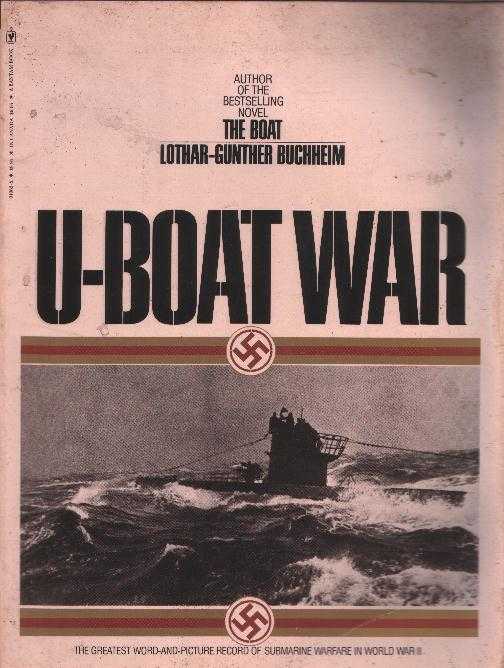
This site costs me quite a few dollars a year to maintain. If you feel inclined, please click on the SECURE means above and donate a small sum to my account. I help many hundreds of people per year with enquiries and get nothing in return.